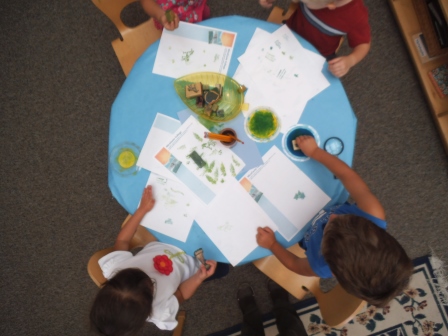We did some garden planning again today. Like yesterday, you can read the ideas of the children below. The next step is to learn more about gardening with the children. For example, some of the things listed by the children cannot be grown in our garden box. The teachers already know this, but we don’t want to tell them. Instead, we want to ask the children questions and investigate their ideas. For example, we might ask, “have you ever seen that growing on a plant before?” Or we could ask, “how can we find out how to grow ______?” By investigating the ideas more, we can solidify our plans for the garden box.
Here are the things the children said today:
Wyatt: blueberries
Isabella: tomatoes and flowers (pink, purple, and green)
Alexis: lettuce and a snail
Addie: peaches
Kendra: strawberries and bananas
Mia: blueberries, tomatoes, and carrots
Aiden: tomatoes and bananas
Curren: red flowers
Madisyn: watermelons and pineapple
Kingston: cucumbers and carrots
Cameron: carrots, tomatoes, and lettuce
Caleb: flowers
Lexie: “a pink flower for me”
Lauren: “a pink rose for me”
Leah: tomatoes
Jasmine: bee flowers and strawberries
Esperanza: strawberries
Julian: swiss chard (after observing the room 1/2 garden and how they were growing swiss chard)
Caiden: flowers
Peter: blue flowers
Today our special area of the classroom to highlight is the writing area.
The writing area is a place where we may put things like pencils, markers, envelopes, stationery, stencils, alphabet cards, stamps and stamp pads, a hole punch, scissors, and other tools people use in writing.
The writing area is a place where children can explore these tools. They learn how to control their hands using hand-eye coordination (involves brain development and practice). Once they learn that print carries meaning (print awareness), they may begin to experiment with writing.
Writing is a complex process that involves an understanding of and interest in letters and words . It also involves fine motor skills, which can be built with controlled use of things like playdough, paint, Legos, and even dressing baby dolls. All of these things can help with writing. In fact, artwork is a beginning step towards writing. It involves taking ideas in the mind and recreating them on paper or in another form of art. Writing is a similar process, but letters and sounds are used to represent the ideas. We are hoping to introducing signing in for the children in the next week or so. For now, they are definitely using the writing area and using it together!
Something to do at home:
A child’s first name is oftentimes the first word in which they are interested. Recognizing one’s own name is a great first step to help children learn print. We are going to do a lot of activities at school that involve name recognition. At home, you can show your child his or her name if you write it. Having your child sign a card or his or her artwork can also be helpful. If your child’s name doesn’t look like it should yet, that’s okay! It’s part of the developmental process. Please speak with a teacher if you have questions about this process. In the meantime, we want children to use these materials and have fun with them in a way that promotes development and does not pressure them. Thanks for taking time to read this blog post!

